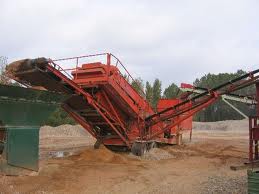Difference between revisions of "Screening Conveyors"
Jump to navigation
Jump to search
(Created page with "Category:Conveying{{Knoppen}} <noinclude><!------------------------------------------------ * READ THIS FIRST * Only edit this page if you can improve the content. * Imprope...") |
|||
| (One intermediate revision by the same user not shown) | |||
| Line 7: | Line 7: | ||
* Please start editing this page after the /noinclude | * Please start editing this page after the /noinclude | ||
* -------------------------------------------------></noinclude> | * -------------------------------------------------></noinclude> | ||
[[File:SCREENING CONVEYORS.jpg|thumb|right|Screening Conveyors]] | |||
'''Screening Conveyor''' is used for single- or multiple-size separations of food products. It removes fines, broken pieces and/or agglomerated oversize particles from finished food products. With quickly removable screen panels, the machine provides easy access and fast cleaning. Common screening conveyor sizes range from 12 to 48 in. wide and from 10 to 30 ft. long. Screening conveyors are driven with an eccentric drive assembly or a self-contained rotary electric vibrator motor to generate the pitching motion that moves the product and promotes segregation of the product particles to allow the screen panels to separate the fines, broken pieces and oversize particles from the good product. | |||
Latest revision as of 06:17, 27 August 2012
Screening Conveyor is used for single- or multiple-size separations of food products. It removes fines, broken pieces and/or agglomerated oversize particles from finished food products. With quickly removable screen panels, the machine provides easy access and fast cleaning. Common screening conveyor sizes range from 12 to 48 in. wide and from 10 to 30 ft. long. Screening conveyors are driven with an eccentric drive assembly or a self-contained rotary electric vibrator motor to generate the pitching motion that moves the product and promotes segregation of the product particles to allow the screen panels to separate the fines, broken pieces and oversize particles from the good product.
